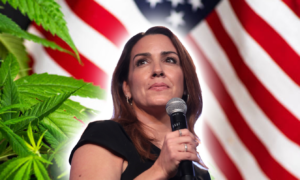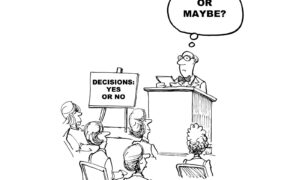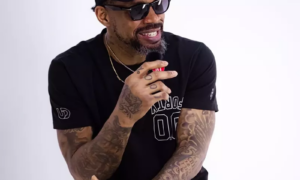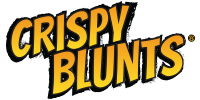Sasha Kadey Of Greenlane Talks B2B Cannabis Merchandising

We sat down with Sasha Kadey, Chief Marketing Officer for Greenlane.
Sasha Kadey came to the industry on the heels of building tremendously successful careers in the fields of wine & spirits and luxury beauty. Sasha was a recognized thought-leader and acclaimed public speaker in both industries, known for bringing groundbreaking, disruptive, technology-based solutions to bear. Sasha’s initiatives and campaigns were highlighted in AdAge, Wine Business Monthly, Tech Times, PopSugar, InStyle, several university curriculums, and other publications. His web properties were awarded by design and UX authorities like Communication Arts, Awwwards, Internet Retailer, and even American Express.
Sasha now brings his considerable talents to the industry as Chief Marketing Officer for Greenlane, with a keen eye toward elevating the sophistication level of the industry’s retailers and capitalizing on emerging opportunities in an era that promises to be characterized by rapid consolidation, innovation, and evolution. We sat down with Sasha last month at the NCIA Conference in Oakland CA to discuss the cannabis accessories market.
Marijuana Retail Report: Why don’t you tell our readers a little bit about Greenlane.
Sasha Kadey: Well the company’s been in business a little over 12 years now and we’re the largest distributor of premium accessories for smoking; vaporizers, grinders, glasses, ext. and we mainly serve head shops and dispensaries across the United States. Over the past few years as the industry landscape has obviously undergone considerable change, we’ve really turned a focus to the dispensary market where we’ve been distributing our same catalog of premium branded products, child-resistant packaging, and custom branded products where a dispensary or a cultivator or a processor wants their own branding on a cartridge, a child-resistant container or one of our premium vaporizers or glass products or grinders.
Marijuana Retail Report: White labeling is kind of where the industry is going as far as packaging?
Sasha Kadey: Yeah people really want premium. The industry is very competitive in terms of how dispensaries do business and how growers and cultivators and processors do business, so everyone’s looking for ways to differentiate themselves. One way to fight the commoditizing effect that we’re seeing, is in a lot of the more developed recreational and medical markets where the price per pound is going down, people are really seeking to differentiate through premiumization or other value-add methods.
There also are definitely big opportunities for child-resistant packaging, and not just the commodity kind of pill bottles that have been around for a while now, but for premium glass as well, and as dispensaries seek to build their own brand, something like a custom branded grinder with their logo is huge. For example, I’d say the average smoker keeps a grinder for four to five years, some much longer than that, and if you’re going to have that grinder sitting on your coffee table or wherever you enjoy your smoking ritual, every time you engage with that grinder it’s another touch point with that dispensary to build that loyal relationship. To date, most of our business in the dispensary channel has really focused on child-resistant packaging, and those custom branded products, including some full custom solutions where we’re working with manufacturers, domestically or abroad, to develop proprietary solutions for dispensaries that want to offer their own custom product, not just custom branded product. I think that the future of our business in dispensaries is much more focused on our core, which is offering the best selection of premium accessories for smoking.
The vast majority of products sold in dispensaries, aside from pre-rolls and edibles, requires some device or apparatus to consume and right now most dispensaries don’t really focus any attention on selling those retail accessories, they just let that money walk out the door and go to one of the head shops or smoke shops that we do business with, which is great for us and great for them as well, but it seems like a big missed opportunity. When I talk to dispensary operators about, “why aren’t you paying more attention to these retail accessories”, you hear kind of the same refrain, the same few reasons that they’ll share with me as far as why they’re not focused on that. One is they’ll say, “We’re really just focused on selling cannabis, we have a license to sell it, not everybody else does, it’s a little bit of a monopoly, we’re making money hand over fist doing it and we’ve got our hands full,” so they’re focused on that, they’ll say they don’t have the bandwidth, they’re stretched thin as it is trying to keep up with their core business, they don’t want their budtenders or business distracted.
So, we’ve really taken all that feedback from the dispensaries and worked out how we can offer a solution that alleviates and addressed those concerns. We’ve recently launched a pilot program with some of the top dispensaries across Colorado and California, where we’re basically going with them, determining the best retail merchandising square footage they can offer us to work within their dispensary, and then taking all the hard work out of the equation for them. So we’re picking the right sku selection, the right merchandising mix based on where they are, what their average ring out at the cash register is, what their mix of concentrate versus flower is, and helping determine what the right products for them to offer their patients are. We’ll merchandise that, we’ll help them with how to best display it by allowing consumers to engage with it, especially when they’re waiting in line and they’re kind of a captive audience, and then working with their staff on how to make that sale. We’ve pulled a lot of our knowledge and learnings from how high-end hair salons sell a retail product. It’s a very similar analogy, you look at a high-end hair salon, they’ve got clients coming in every day and they’re selling them their primary good, which in that case is a service in the form of cuts, color or styling. But, in that industry, at least in high end salons realize as much as 30 to 40% of their revenue from the sale of the ancillary products such as the shampoo, conditioner and styling product that people use to maintain that service they’ve received in the salon, and we see there being very little difference in the way the dispensaries can work. Part of that whole selling process, the way that we see it, is that you’re consulting with the patient. From that quick conversation, you can learn a lot about that customer’s use habits. I could say whether they’re a flower customer or a concentrate customer and that tells you a lot right there about what type of retail accessories they might be interested in, so through looking at what that customer purchases and the information you’re gathering ordinarily already in the course of that sale, you know a lot to be able to make a custom-tailored recommendation for retail products to that customer.
Marijuana Retail Report: Speaking of salons, you got your start in the winery and then the high-end salon business. Can you speak a little bit about that experience and how it helped prepare you for this industry?
Sasha Kadey: I spent seven or eight years in the wine industry with King estate winery in Oregon. At King estate, there are quite a lot of similarities, one is that wine is a product that is typically sold with a little bit of education that comes with it, so I think that’s very similar how a wine educator in a winery presents wine, and speaks to a customer about what type of wine they like. There’s a lot of similarities with that and how a budtender sells a product in a dispensary. The other compelling similarities that I see are although the wine industry’s been around a really long time, thousands of years, they’ve had to fight a commoditizing effect. At it’s core, the wine business is an agricultural business, and there are table grapes that sell for 100 bucks a ton and there are wine grapes that sell for 800 bucks a ton and then there are wine grapes that sell for 5000 or 6000 dollars a ton and a bit of that is the storytelling, the value-add, and I think we’re starting to see the beginning stages of that same phenomenon taking shape in the cannabis industry. After I left the wine business, I spent five years in luxury cosmetics, primarily dealing with really high-end salons, so that’s where I learned a lot of those techniques that we’re now trying to bring into the dispensaries with the mind to help them increase their revenue and profitability through selling the right curated selection of premium accessories, but also lend them some support in understanding what their opportunities are to cross-sell the cannabis products. We don’t really have an economic interest in that, other than to be a good partner for the dispensaries we work with on the retail accessories side and try to establish ourselves as a category manager that’ll help them maximize their revenue and profitability across everything they sell in the store.
Marijuana Retail Report: How would you best teach a startup on how to leverage their dollar spend for these new accessories?
Sasha Kadey: Well, first of all we offer terms, so we offer these guys credit, which is helpful in that cash-strapped solution. If we’re doing our job right, the process we go through determines the right product offering that they’re going to be successful with, so it kind of takes a little bit of that risk of where to put the dollars out of the equation. We believe in our ability to match up the right products with their clientele, so that they will be successful, but that’s really part of that process of getting in there. Understanding where they are geographically, what their typical customer looks like, how much they’re spending it on and on what, and doing a little bit of psychographic analysis too in order to determine things like; What’s the popular music in this area? Are we in an urban area where people are mostly listening to hip-hop? There’s a lot of diverse players in this business and there are certain brands that are going to appeal to that customer. For instance, a G pen will appeal to that more urban demographic, whereas a PAX might appeal to more of an upper-class kind of demographic, and then there’s that area in between and by no means would I say it’s a one or the other equation as an absolute, but it’s what you go heavier with and you also take a long hard look at what that average checkout per customer in the dispensary is and match up product offerings that are in the right. You’re not going to look at a dispensary that has an average checkout of 30 dollars say let’s offer 300 dollar products, but a dispensary that has an average checkout of 80 to 120 dollars, you might look at higher end tools.
Marijuana Retail Report: You were talking about being able to market directly to a specific demographic and matching that to the dispensary you are working with, do you have a methodology that you use to codify that demographic?
Sasha Kadey: We have a lot of proprietary data, and in most cases, there are head shops near that dispensary that we’ve done business with for a long time so we can see what the trends are there. Certainly we’ll look at the macro trends in that little geographic area, we’ll look at all those kind of neighborhood demographics, but ultimately we’re going to learn the most from taking the operators of the dispensary and the managers that are on site through a consultative process where we’re asking them questions about who their customers are and what their business is like, and what strains do the best, you can tell a lot from that. Are they selling Cookies, or are they selling a lot of OG Kush, all of those will give us the ability to triangulate what’s going to work best in their shop too.
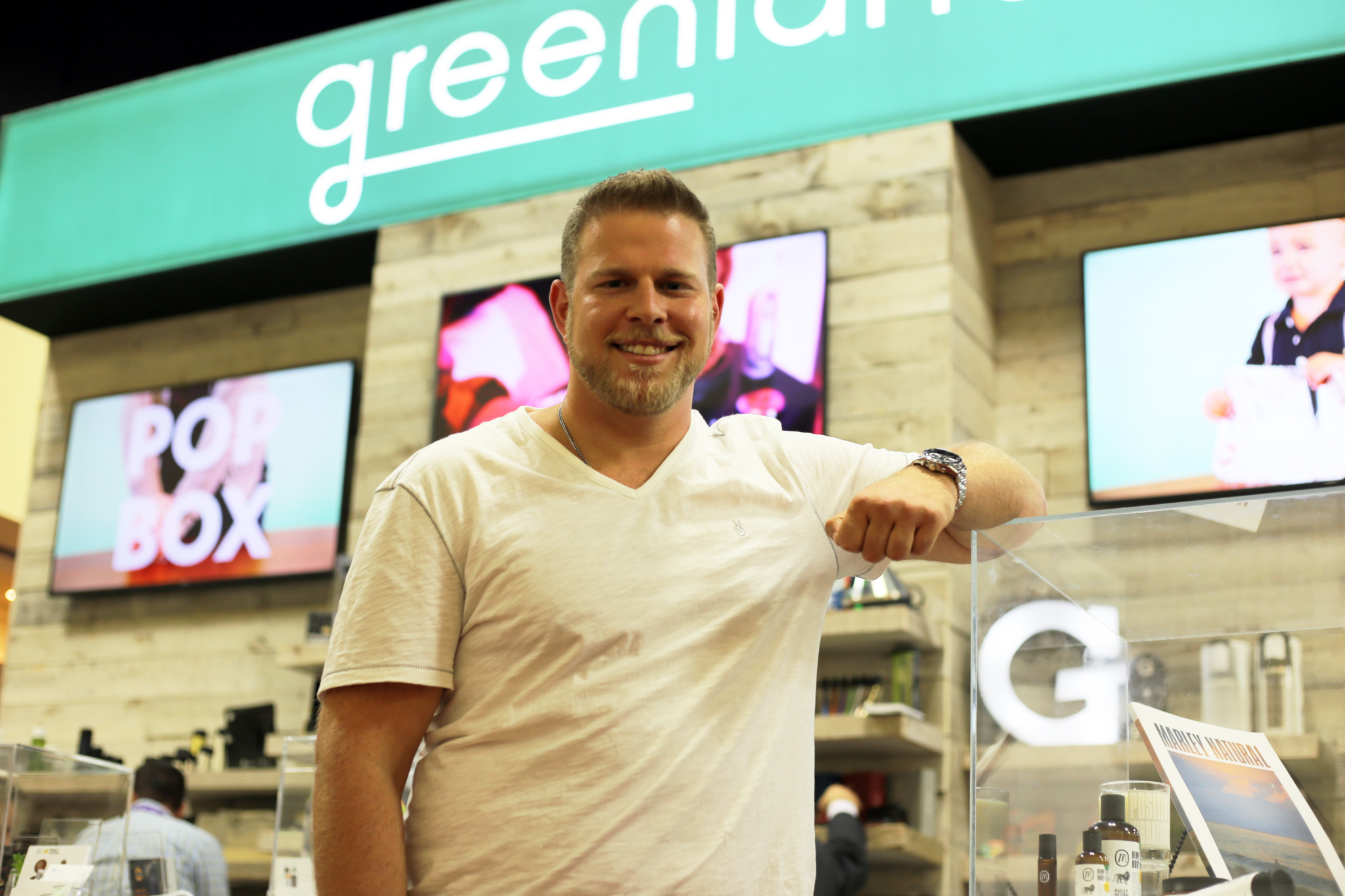
Sasha Kadey manning the booth at the NCIA Conference in Oakland CA.
Marijuana Retail Report: As far as how accessories are being sold, we spoke a little bit about having previous relationships with head shops. Now that you’re moving into dispensaries, do you see dispensaries taking over that accessories industry, or do you see head shops as sticking around for a long-term solution?
Sasha Kadey: That’s a really complicated question, I think that this is different depending on what state you’re in. I think head shops are challenged right now with reinventing themselves a little bit to maintain and increase their level of relevancy, patronage, and customer loyalty. I look at a market like Portland, Oregon, and you can certainly see that Oregon has been a little more liberal in terms of how many retail licenses they’ve give out, so there’s a higher concentration of dispensaries and as such the dispensaries have had to compete with each other. Because of that you’ve seen some really sophisticated dispensaries rise above, guys who get the retail merchandising right and understand that consumer sale process. In the markets where they’ve had the focus on that and they’ve really developed good business, you can certainly see an increase in their retail merchandise sales and a decrease in the business head shops do, but that’s different depending on the market. Even in California, the dispensaries there, more or less neglect the opportunity of retail merchandising like we’ve been talking about, and so I think the head shops are doing even better because there’s just this increased activity, but once those dispensaries come around to it, it’s a challenge for the head shops, but I think they still have an opportunity. Then I think that eventually there may be a bit of a convergence where a lot of head shops become dispensaries and a lot of dispensaries become head shops.
Marijuana Retail Report: Do you see partnerships between the two as being a possible future in regard to licensing and retailing?
Sasha Kadey: Yeah absolutely I see those as big opportunities, and especially when you look at some of the real estate that these head shops own or have long-term leases over that could potentially partner or get their own licensing for dispensing could be a big opportunity.
Marijuana Retail Report: What is the number one mistake that you see with most retailers today?
Sasha Kadey: So just to lay it out, from my data, which I’d say is arguably the best in the business from where we sit, the average dispensary is seeing an average transaction in the 70 dollar range roughly, they’re seeing maybe two percent of their revenue come from accessories and ancillary products, which is really low, people walk in the door all the time and probably 90% of those people walk out having made a purchase. People walk into a dispensary intent to buy something, they’re a bit of a captive audience, the chances of them coming to a dispensary, looking around and walking out without buying something is really low, so when you have a captive audience like that, your opportunity is to merchandise for up-selling and cross-selling, but what they do right now is the equivalent of putting your milk and eggs and bread at the front of your supermarket. When you go to a supermarket, where do they put the milk and eggs?
Marijuana Retail Report: In the back?
Sasha Kadey: And do you know why they do that?
Marijuana Retail Report: You’re going to have to walk past everything else to get to it.
Sasha Kadey: Exactly. They know that 90% of the customers coming to the supermarket are there to buy milk, eggs or bread, so they put it in the back of the store knowing that you’re going to have to walk past everything and chances are you’re going to buy at least one or two other items on your way to get that necessity you came through the door for, so when you go into a dispensary, and all they’ve got is cannabis product everywhere right in front of you that you came in there intent to buy, it actually is pretty confusing to consumers, and they’re not using that real estate well. If they were using the real estate well they’d put all that stuff in the back and they’d use their prime merchandising space, to up-sell to their highest end flower and extract, so they’re getting more per gram, or accessory products so that they’re getting that cross-sell opportunity.
Marijuana Retail Report: Where do you see is the hottest emerging market in the industry?
Sasha Kadey: Massachusetts looks like a really interesting market, I think they’re very aggressive with the way they’re structuring their laws so I’d say Massachusetts looks like a really interesting market. Vegas has a lot of potential based on tourism appeal and trying to bring people to the state. At the end of the day though, California is where it’s at man, sixth largest economy in the world. It’s far and away the world’s biggest cannabis market.
Marijuana Retail Report: In terms of brands and emerging trends, what would you say is the hottest trend right now in accessories, and then what would you say is the brand that’s fore-fronting that change?
Sasha Kadey: PAX obviously has done a phenomenal job of building their brand, they’ve got a lot of resources behind them, I think that they’ve got a lot to be proud of and they’ve certainly established themselves really well. G pen has done a really good job of leveraging partnerships with hip-hop artists and other influencers, and really built probably the closest thing to a legitimate lifestyle brand that’s in the space today. Trend-wise I would say concentrate is really starting to take over or has really taken over in a lot of ways. When I look at our data there’s been a marked shift over the last two or three years where at one point in time, we saw our business probably 70 to 30 flower devices versus concentrate devices, and today it’s more like 40 to 60 flower to concentrate. Things come and go though and it’s always interesting to watch because there’s a pretty high degree of unpredictability in what that next big movement or trend is going to be. For now however, I’d say concentrates and quality of the devices and accessories around concentrates, where people were maybe happy with buying a torch that was in the 30 to 40 dollar range before and maybe had a relatively short lifespan as a result of that, now they want torches like the big shot blazer torch, which is a 90 dollar torch that’s made in Japan, not China so it’s a precision tool. Blazer, and don’t let the name fool you, has been around for decades and the vast majority of their business is to tool companies, they do more business with Sears and Snap-on than they’ll ever do in the counterculture industry or cannabis industry, but more and more you see people gravitating towards that kind of high-quality product.
Marijuana Retail Report: Do you see growth for startup accessories? If so, do you see that more in the high-end market or do you see that more in the middle or lower market?
Sasha Kadey: It really depends on what the product is. Simple products there’s that sweet spot, those 20 dollar buys, it’s a hard question to answer without specifics. I think anything over a certain price where it’s not an impulse buy, people want to see integrity, they want to know that it’s being manufactured with integrity by people they trust, backed with a warranty, reliable, not filled with nasty and volatile particles that might jeopardize their health. What I see happening in this industry is all the things that exist in every other industry are coming to this industry. It’s part of that whole maturation and legitimization that’s going on. You wouldn’t go and buy off-brand kitchen products where you were worried about how they might affect your food quality, so I think that it’s just a matter of all those kind of best practices from the world at large and more mature companies coming to this industry.
Marijuana Retail Report: In a restricted market, how do you break through the digital blockade of cannabis companies not being allowed to market on the Google / Yahoo / Bing exchange or paid advertising on social media?
Sasha Kadey: It’s very difficult. It’s tough not having access to Google AdWords and things like that. We’ve seen the impact of Google deciding that certain products aren’t allowed to be advertised on Google AdWords, so you just have to get a lot more creative with organic methods such as influencer relationships, and working with the networks that will permit the products. It’s not the easiest thing in the world, but it’s another reason why there is such a huge opportunity for the B2B side of this industry and for dispensaries to really develop a mastery of selling retail accessories, because they almost have a monopoly on that too. If you want to reach a cannabis consumer, and market retail accessories to them, there is no better place to do that, than in a dispensary where you know 100% of the people in that room are potential consumers for that product.
Marijuana Retail Report: Do you see companies like Facebook and Twitter coming forward and saying, you know what in recreational markets we’ll allow it?
Sasha Kadey: I think it’ll take some time unfortunately and I’d rather it didn’t, I wish I could say yeah I think it’s on the horizon, but these are all complicated situations. There’s a lot of people sitting on the fence waiting to see what happens, I think they’d be smart to do that, I also think that California especially is home to a great many forward-thinking tech companies, and as recreational cannabis emerges in California, maybe we’ll see some shifting attitudes to that. I hope we do, but I think it’s still got some time ahead of it.
Marijuana Retail Report: What’s next for Greenlane’s focus?
Sasha Kadey: I think that with regard to dispensaries, there’s really two areas of focus, one is everything we’ve just talked about, which is helping them find 25 to 30% of their revenue come from the add-on sales of accessories, premium accessories, and helping them learn how to offer the right mix of merchandise and how to present that merchandise to consumers in the best way possible that increases both their average checkout substantially and their bottom line profitability. That’s our main focus there, the other focus I think is looking at the merging of these two worlds, one where we’ve really built ourselves as being at the forefront of introducing consumption technology, the best vaporizers, all that, and now seeing where prefilled solutions have really become a big thing in dispensaries, mostly in the form of disposable prefilled tanks, and looking at more proprietary solutions that I think that’s a big movement in dispensaries right now and where we have those exclusive relationships with technology companies that develop vaporization technology and helping them market.
Marijuana Retail Report: If you could leave our readers with one tip, what would you give them?
Sasha Kadey: Stop putting the milk and eggs at the front of the store.
Marijuana Retail Report: Sasha Kadey, CMO of Greenlane, thank you so much for your time.
Sasha Kadey: My pleasure.
This interview has been edited for clarity.

